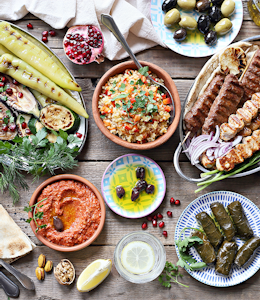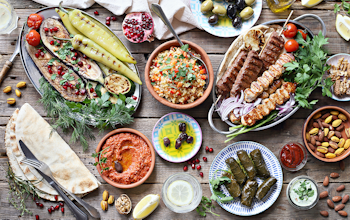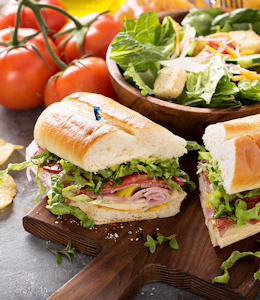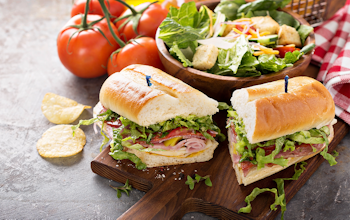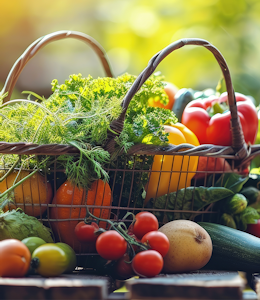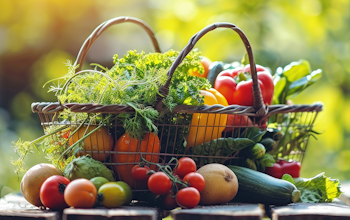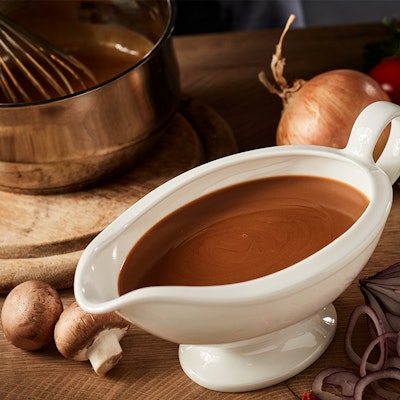Easy summer soups
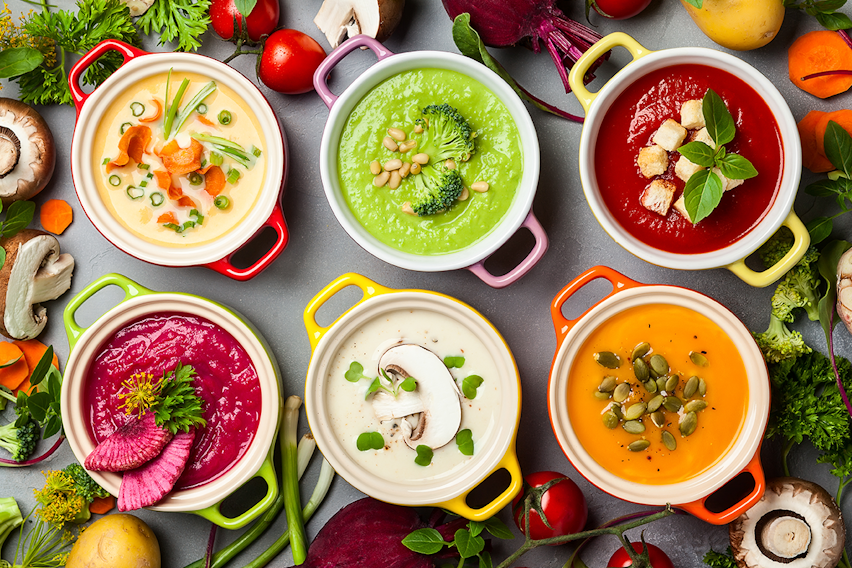
Is soup good for summer? You bet it is. A light and refreshing option when it comes to warm weather dining, healthy summer soups are an easy choice as well as a fitting one this time of year. And whether a cold summer soup or something with a little heat to it, there’s something for everyone…
The best summer soups are:
- Gazpacho
- Cucumber and lettuce soup
- Pistou soup
- Salmorejo
- Pea and mint soup
- Ajo blanco
Now let's find out more about them...
Gazpacho
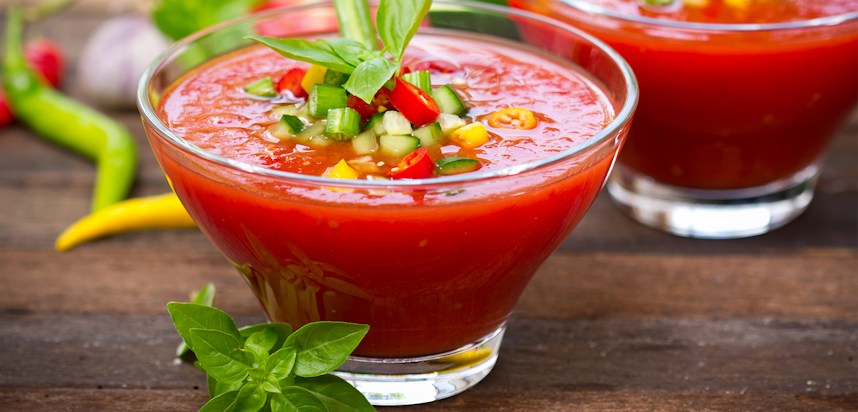
What is gazpacho?
Gazpacho (sometimes spelt gaspacho) is a type of cold or chilled soup eaten in Spain and Portugal, and originating from the southern regions of the Iberian peninsula in the former.
It is a light, refreshing soup made from blended vegetables (or as is traditional, vegetables pounded in a pestle and mortar) such as tomatoes, cucumbers, peppers and onions, as well as other ingredients such as bread, garlic, oil, salt, pepper, paprika and red wine vinegar. Gazpacho is a healthy choice, low in calories and rich in vitamins A, C and K, and while the precise origin of soup is not known, it is widely believed to have evolved from a bread soup that arrived in Spain with the Romans.
Serving suggestion
For an Andalusian culinary experience serve gazpacho in a glass with ice to be consumed like a beverage.
Top tip
Occasionally the blend of vegetables in gazpacho can taste bitter - but as with a tomato-based sauce you can add a small amount of sugar to neutralise the acid and gently sweeten the soup.
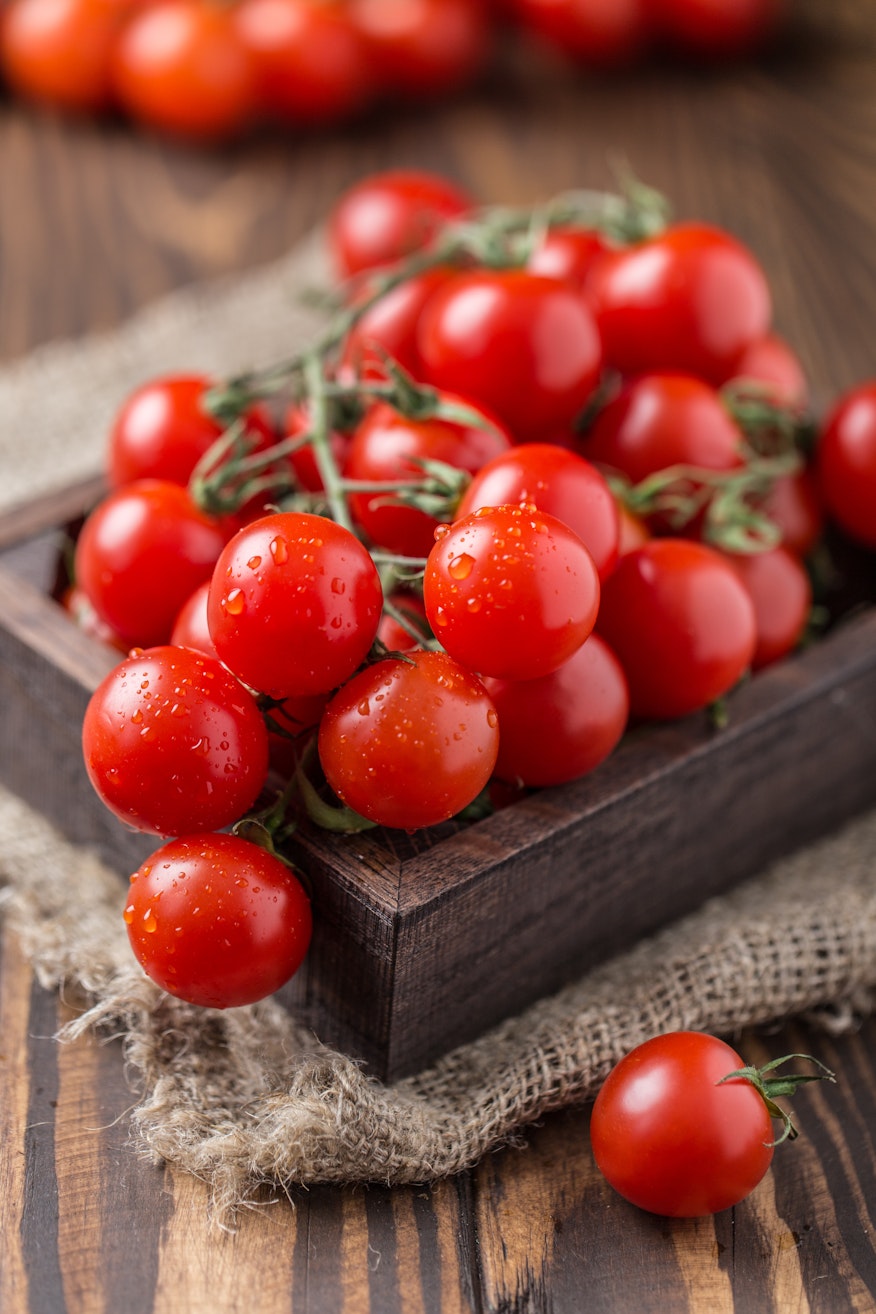
Allergen alert!
Traditional gazpacho is made with stale bread - usually wheat bread, which is a Cereal containing Gluten, one of the 14 major food allergens. Another ingredient is red or white wine vinegar, which can contain Sulphur Dioxide - another allergen.
Cucumber and lettuce soup
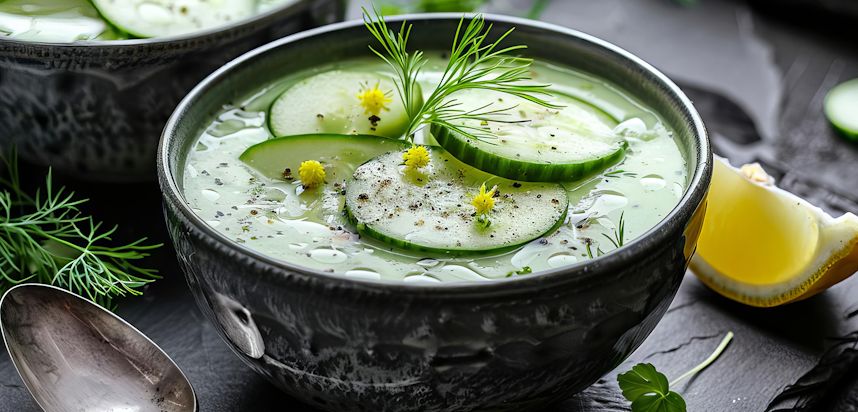
What is cucumber and lettuce soup?
A favourite of those trying to manage their weight, cucumber and lettuce soup is known for being light on calories - thanks to a base of ingredients such as spring onions, lettuce, cucumber and boiled water. Calories may be added if the onions are softened in butter.
Cucumber soup is incredibly light, and can be served in between courses of a meal, or as a snack or light meal to help detoxify the digestive tract.
Serving suggestion
Compliment the coolness and lightness of the cucumber and lettuce soup with a dollop of sour cream or plain yoghurt on the top.
Top tip
Never cook a cucumber by placing it into boiling or starting to boil water, as it will taste sour. It is better to blend the vegetables and then add in already boiled water, but if you prefer to cook the vegetables in the water and then blend together place the cucumber directly in the cold water before it is heated to boiling point.
Pistou soup
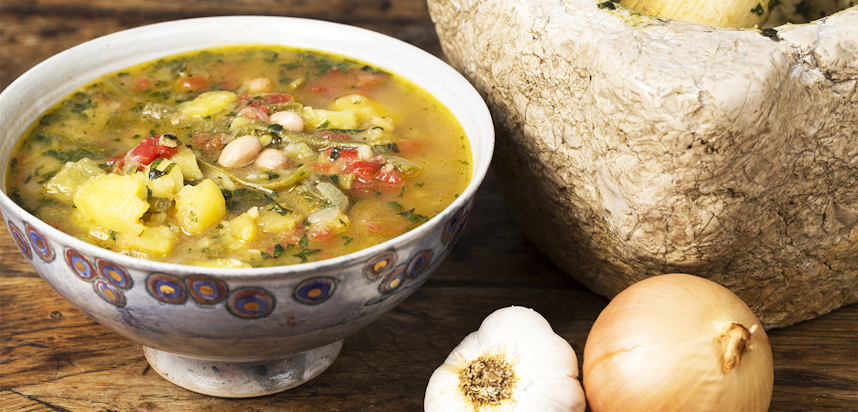
What is pistou soup?
Also referred to as “soupe au pistou”, pistou is a type of soup traditional to Southern France and has a name that probably derives from either the Provencal word “pistou” - meaning a paste made with garlic and basil, or the old French word “pesto”, meaning “pestle” (like in pestle and mortar).
Pistou is made with summer seasonal vegetables such as tomatoes, squash and courgettes, simmered with further ingredients like white beans, potatoes and usually a small pasta such as conchigliette. The final, and key, addition is a dollop of pistou - a herb paste made from basil, garlic and olive oil, and sometimes a hard cheese such as parmesan. Pistou is similar to pesto.
Serving suggestion
Whilst pistou is classically a summer soup, serve it as a winter warmer - simply swap out the summer vegetables with those in season in colder months, such as cabbage and kale.
Top tip
Cook the white beans separately from the soup, simply adding them towards the end with a little of the water they have been simmered in for extra flavour (and to help them stick to the soup).
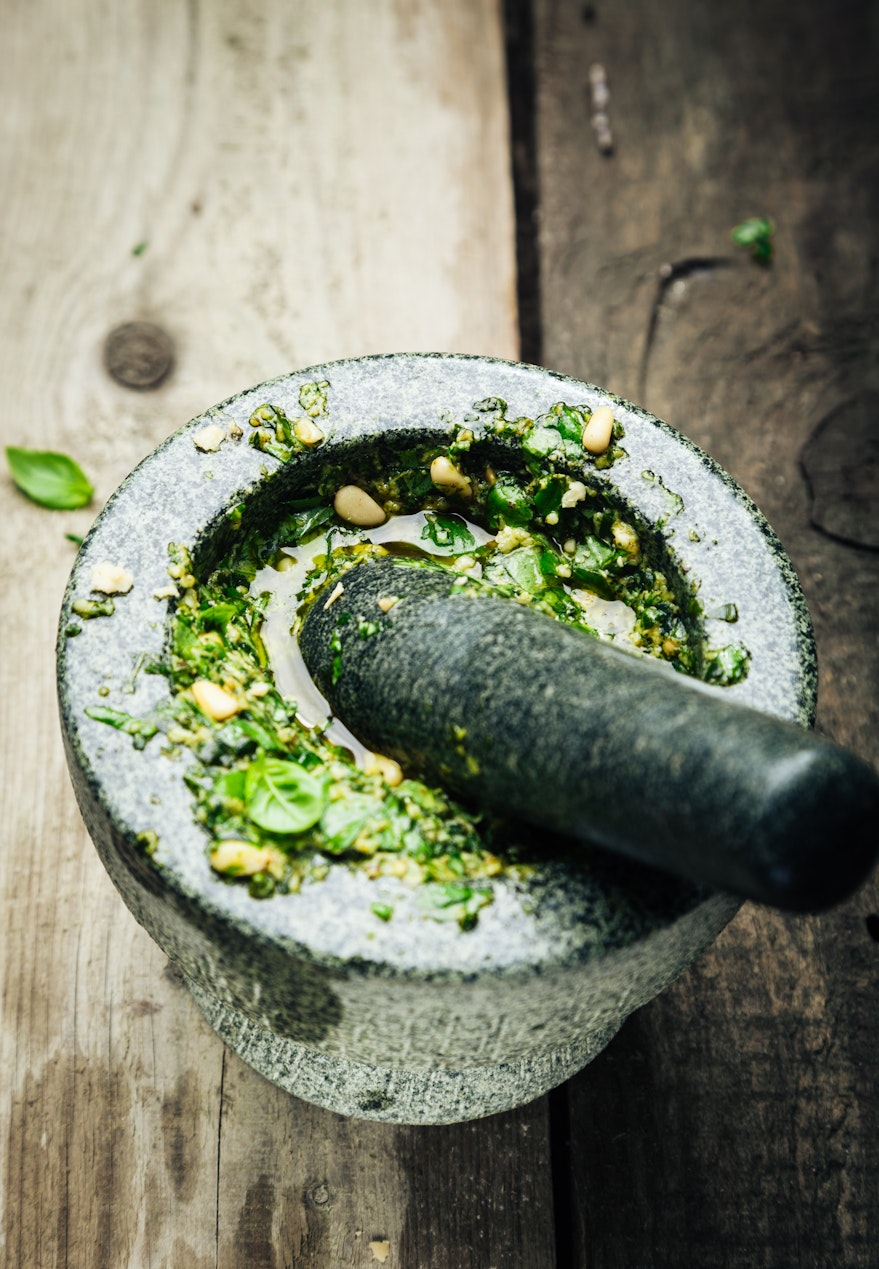
Allergy alert!
As a vegetable-based soup there are not many allergen ingredients in the soup itself (unless Celery has been included, as that is a major food allergen), but the “pistou” may contain several allergens depending on how close it is to pesto.
If only the herbs are included there won’t be any major allergens, but if parmesan and pine nuts are included the soup will also contain the allergens Milk and (Tree) Nuts respectively.
Salmorejo
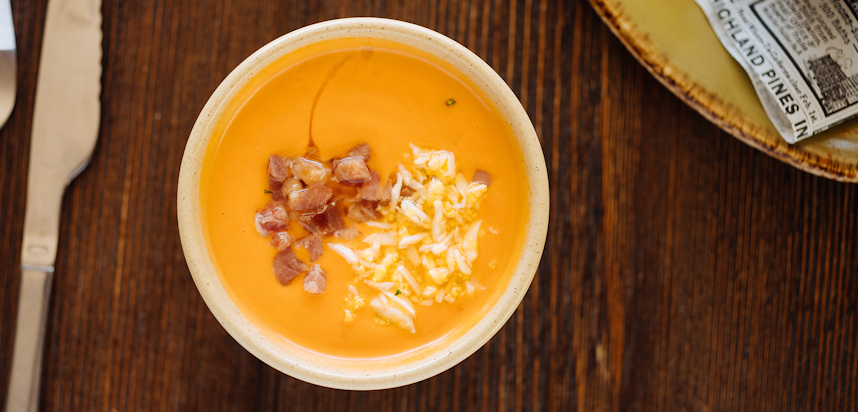
What is salmorejo?
A cold, creamy soup originating from Andalusia in Southern Spain, salmorejo was first referenced as a “transitional soup between the old and new world” as far back as the 17th century.
Sometimes referred to as “ardoria” or “ardorio”, salmorejo is made with one part bread to 5 parts tomatoes, with the addition of olive oil and garlic. The ingredients are pureed together and sometimes topped with some sort of protein.
Salmorejo shares several ingredients and region of origin with gazpacho, but because it has more bread and oil, and the bread is denser, salmorejo is richer and creamier. It’s also made with fewer vegetables, and so takes most of its colour from the tomatoes and bread - giving it a warmer hue than gazpacho.
Salmorejo should always be made with a special bread called “pan de telera”, which is very dense, with a thin crust, and made with a wheat flour that has more protein and less water and gluten than other flours. This is important for the texture of the soup.
Serving suggestion
Garnish with a handful of chopped ham and hard boiled eggs - not only is it traditional, but the added protein will make it more of a complete meal.
Top tip
Make your salmorejo the day before you intend to use it so the flavour has time to develop and intensify as it is chilled overnight in the fridge.
Allergy alert!
Salmorejo is made with bread, traditionally wheat bread. Wheat is a Cereal containing Gluten - one of the 14 major food allergens. Eggs are also a major allergen, if used to garnish the soup.
Pea and mint soup
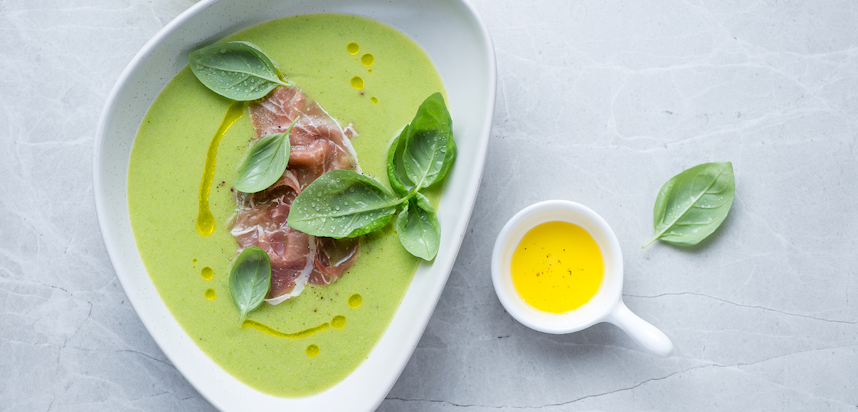
What is pea and mint soup?
Pea and mint soup is a type of soup that can be hot or cold, and served alone as a light lunch, or as a starter and part of a larger meal. The main ingredients in mint and pea soup are fresh mint and peas, along with other vegetables such as spring onions or potatoes, garlic, lemon or lime juice, stock, water and a little sugar or seasonings.
Serving suggestion
The flavours of peas and mint pair well with toasted seeds - pumpkin or chia especially, or nuts like walnuts. Sprinkle over the soup, they’ll also add a welcome crunch.
Top tip
For a more protein-rich soup, or if you want to add meaty flavour - add bacon or ham to the ingredients. The saltiness of this type of meat goes particularly well with the light sweetness of peas.
Allergy alert!
It really depends on the exact recipe you’re using but generally there are no major allergens among the main ingredients in pea soup. Celery is one to watch out for, as is Milk - several recipes will be thickened with buttermilk or cream.
Ajo blanco
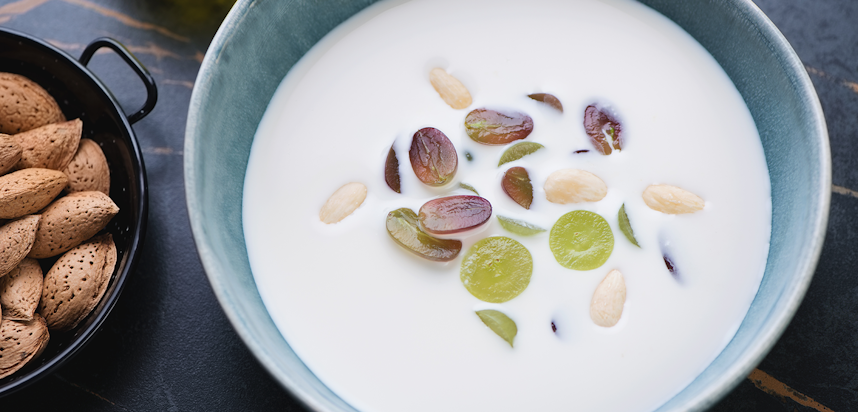
What is ajo blanco?
Typical of the Spanish regions of Granada and Málaga, ajo blanco is sometimes referred to as “white gazpacho”, and like that dish is a type of cold soup. It is thought to have its origins in Roman cuisine.
The main ingredients in ajo blanco are stale or hard bread that has been soaked in water overnight to soften, and crushed almonds, in addition to water, olive oil, garlic and salt.
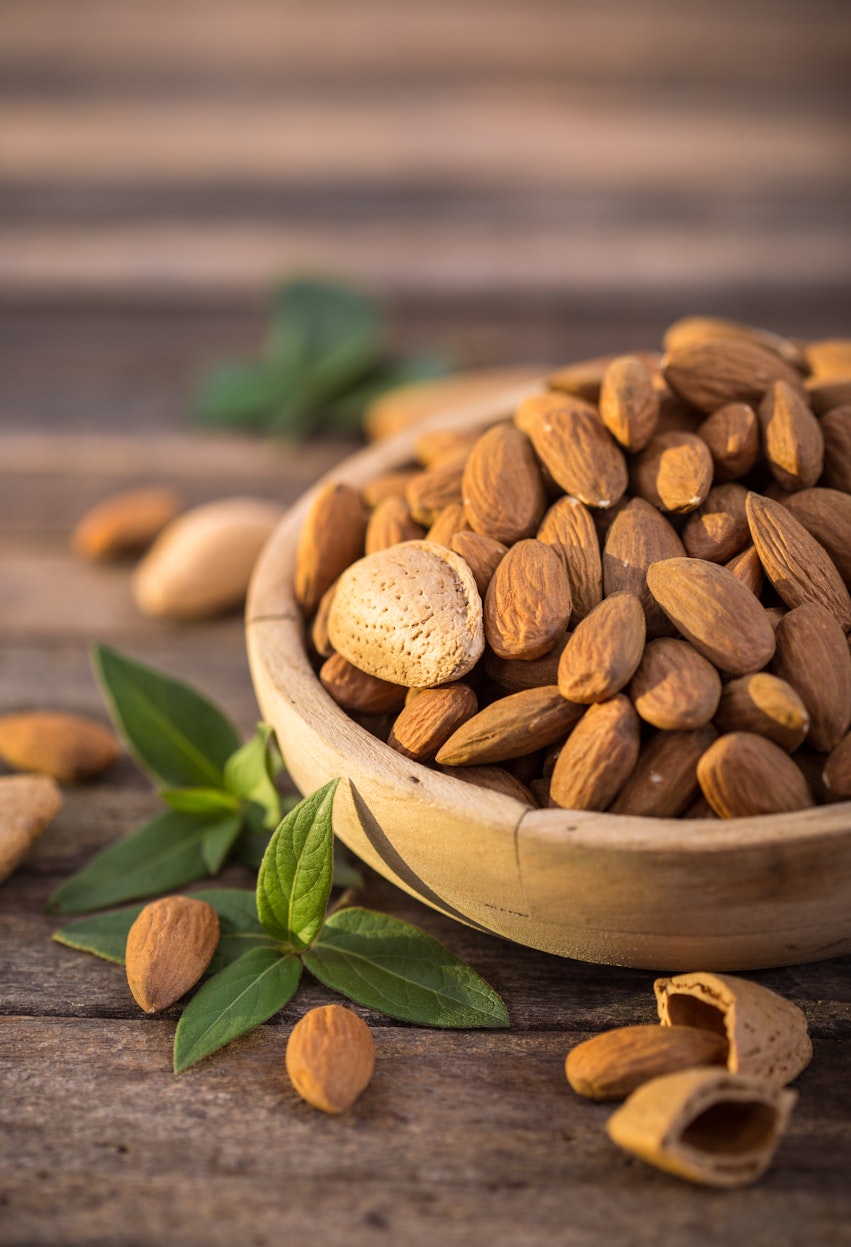
The crushed almonds and garlic are mashed together in a pestle and mortar to form a paste before being mixed and beaten with the other components of the soup. It should have a thick but liquid consistency.
Serving suggestion
Ajo blanco is usually served with the addition of fruit such as melon slices or grapes, but in some areas of Granada it is served in a glass, on the side of a baked potato - making it a heartier dish.
Top tip
Although the bread used for ajo blanco is usually slightly stale or hard and then softened in water overnight, it is not a good idea to simply instead use an already soft and fluffy white bread, as this will end up becoming gummy and ruin the texture of the soup. A robust white loaf that can withstand liquid, something like sourdough, is necessary.
Allergy alert!
Two of the principal ingredients in ajo blanco are major food allergens - bread (usually made with wheat, a Cereal containing gluten), and almonds, a type of (Tree) Nut, There may also be a small amount of Sulphur Dioxide from the vinegar.
